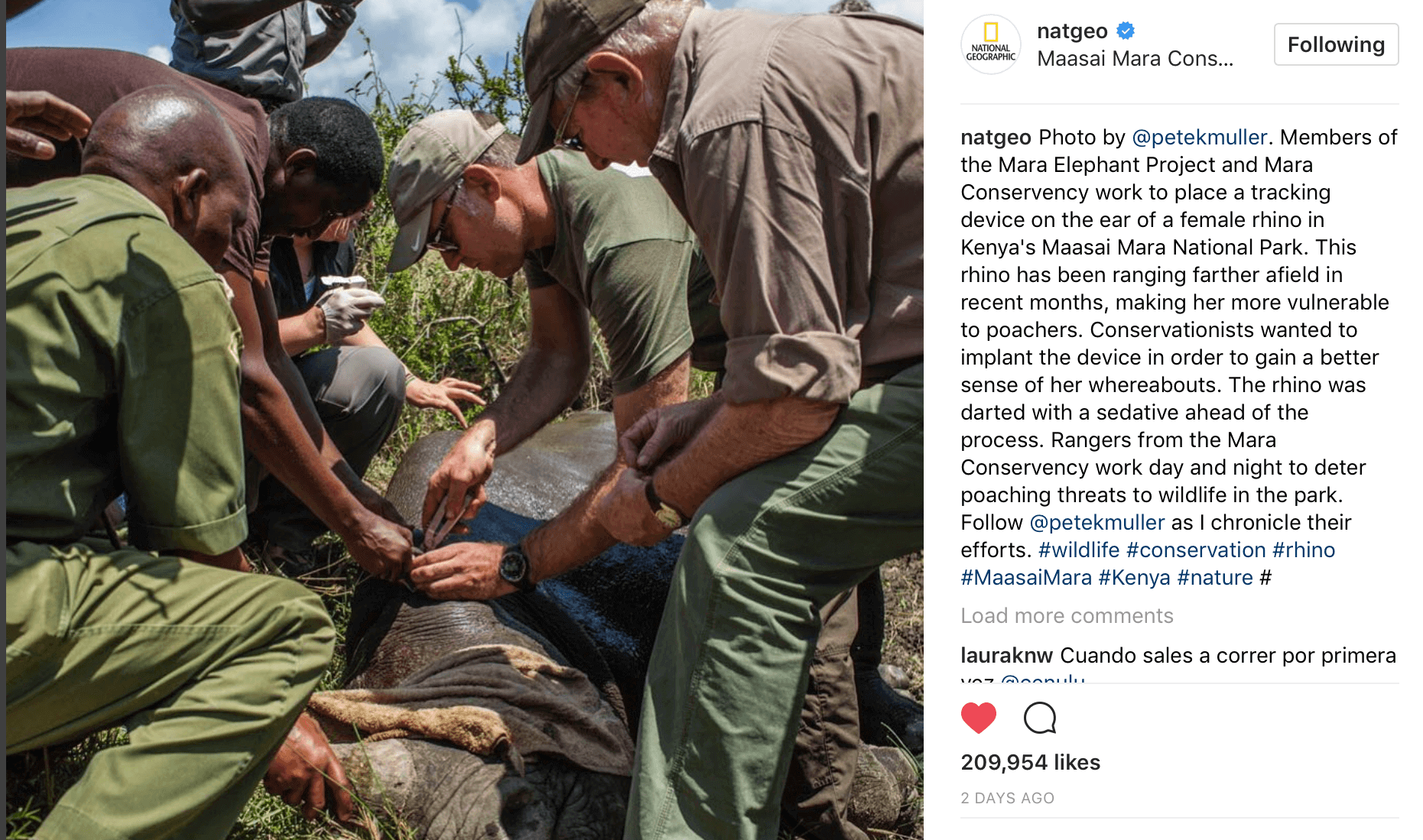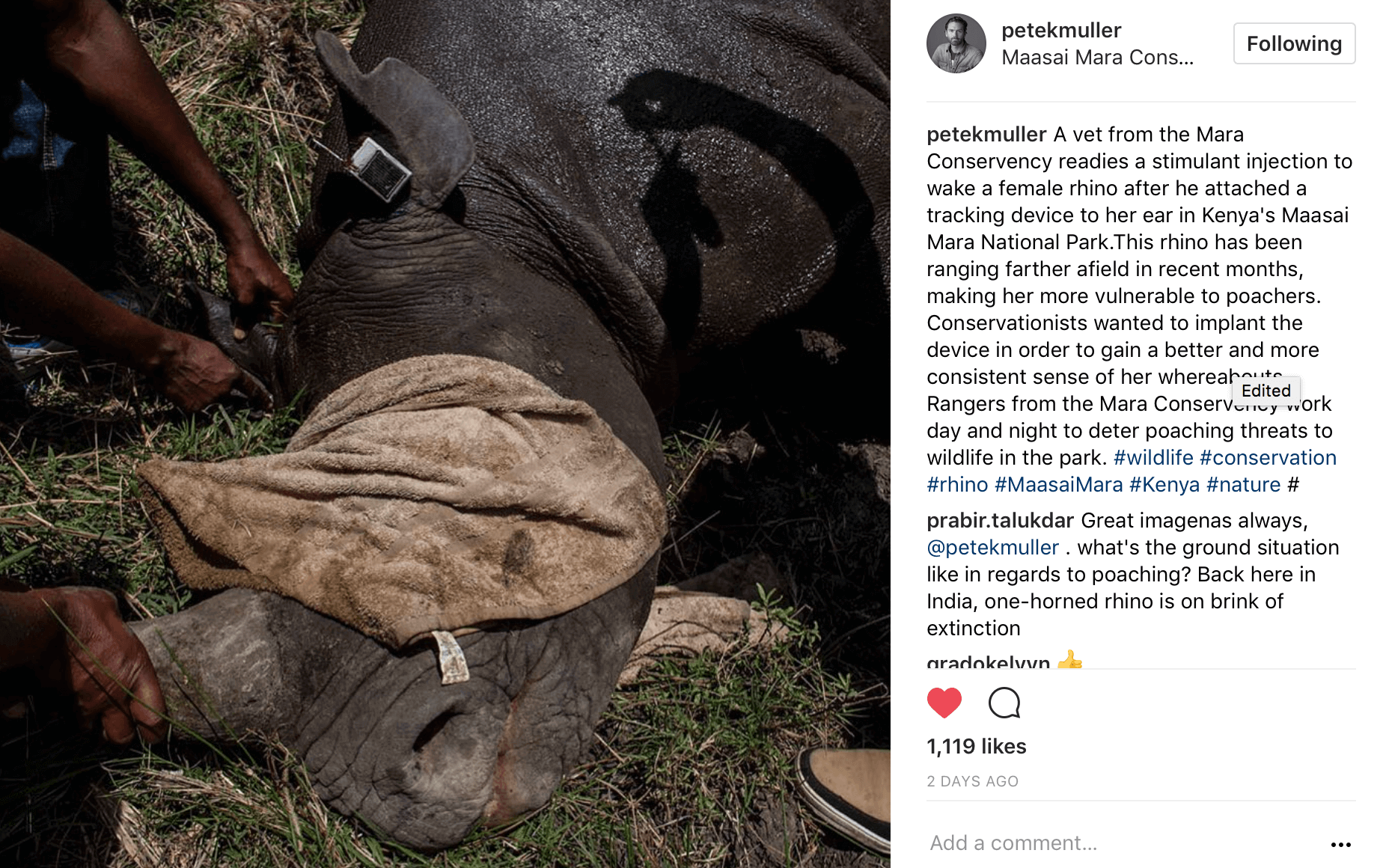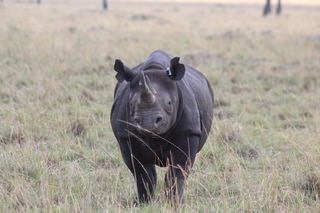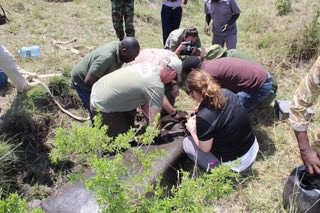On September 12, National Geographic Photography Fellow Pete Muller was capturing a black rhino tagging in the Maasai Mara National Reserve (MMNR) that Mara Elephant Project partnered with the Mara Conservancy to execute.

Mara Elephant Project does serve to protect elephants to conserve the greater Mara ecosystem; however, a healthy ecosystem requires that all species survive and thrive to ensure the Mara’s conservation. The Mara is as important to MEP’s mission as elephants. One does not exist without the other.
So, with that in mind, MEP has spent the last 5 years working to build a community of partners all working together for the same cause, to conserve the Mara. So, when Mara Conservancy needed help tagging a rare black rhino in the (MMNR), MEP was there.
The Mara Conservancy is a nonprofit organization that manages the Mara Triangle and is committed to helping local communities adopt a sustainable approach to conservation by creating a management model that is transparent, accountable and values wildlife. Working with local leaders, communities, and tourism partners, the Mara Conservancy uses effective and efficient management methods that enhance the economic value of conservation to better protect the Mara Triangle and its surrounding ecosystem. The Mara Triangle as an integral part of the greater Mara ecosystem, which deserves a healthy environment that benefits both people and wildlife. They believe in responsible tourism, sustainable development, good guiding practices, and strive for an environment that is free from the threats of poaching, which is achieved by fostering good working relationships with local communities and tourism stakeholders, recognizing the worth of an appreciated workforce, and understanding the urgent need to protect our wildlife.

One such urgent need is the black rhino. In 1971, the Maasai Mara Game Reserve had approximately 120 black rhinos, but by 1984 this number plummeted to just 18 individuals due to poaching. When the Mara Conservancy started in 2001, there was only one known rhino left in the Mara Triangle: an aggressive female, very wary of people and vehicles, and very difficult to spot. However, after only a few months of Mara Conservancy’s regular patrols and successful arrests of poachers, security in the area increased and in 2002, male rhino moved into the Triangle and mated with the female.
 Three successful mattings and the addition of other rhinos that migrated into the area has increased the Mara Triangle’s resident population upwards of ten individuals. Unfortunately, this is not a reflection of the Maasai Mara population as a whole, which still hovers between 25 – 30 individuals. The Maasai Mara National Reserve is the only protected area in Kenya with an indigenous black rhino population, unaffected by translocations, and with the potential to support one of the largest black rhino populations in Africa, given the size of the Reserve.
Three successful mattings and the addition of other rhinos that migrated into the area has increased the Mara Triangle’s resident population upwards of ten individuals. Unfortunately, this is not a reflection of the Maasai Mara population as a whole, which still hovers between 25 – 30 individuals. The Maasai Mara National Reserve is the only protected area in Kenya with an indigenous black rhino population, unaffected by translocations, and with the potential to support one of the largest black rhino populations in Africa, given the size of the Reserve.
In response to the dwindling numbers, Mara Conservancy is launching the rhino surveillance unit to monitor black rhino movements through daily terrestrial patrols and GPS telemetry tracking to ensure greater security of this critical population.  MEP is very familiar with using this type of technology on elephants and has been spearheading the collaring and monitoring of elephants in the Mara for the last 5 years.
MEP is very familiar with using this type of technology on elephants and has been spearheading the collaring and monitoring of elephants in the Mara for the last 5 years.
The candidate selected for their latest tracking tag was a black rhino that had been ranging farther from the MMNR making her vulnerable to poachers. The tracking device was successful attached to her ear and she woke up none the wiser but more thoroughly protected.

Combined efforts like this are what make the Mara conservation initiatives so unique. Organizations throughout are working together using innovative techniques and technologies to make sure this one-of-a-kind ecosystem not only survives, but thrives.


